22
2012Kgalagadi part 1: Kalahari landscapes
Just back from the Kgalagadi Transfronteir National Park, and man what a place. As far as wildlife photography goes, the KTP is one of the top photography destinations in Southern Africa. This was my first trip to KTP and I now understand what the hype is about. They say that you will either hate the place, or that the sand will get under your skin and you will return again and again. I can see why it is not everyone’s cup of tea, what with mile upon mile of sand, dry grass, deadish looking trees, and the same four game species, but what a place for a photo enthusiast. The landscapes are truly breathtaking and with the uncluttered backdrops, lots of birds and great animal interactions, the photo opportunities are awesome. At the risk of sounding corny, I think its safe to say that some of that legendary sand has found its way under my skin.
I am going to post the photos from our trip in four parts, Kalahari landscapes, Kalahari wildlife, Kalahari birds and then finally a post about catching raptors. . .
Tams parents were last in the park nearly 20 years ago, and they remembered very dry landscapes with rolling red dunes and very little vegetation. The park is dry, no question, but last season must have seen good rains because there is a good covering of wavy dry grass, even away from the two river beds. Small shrubs and trees dot the rolling dunes, and with the crystal clear blue skies and some wispy clouds, the landscapes are incredibly picturesque. I just love the contrasting red sand, light grass and blue blue skies.
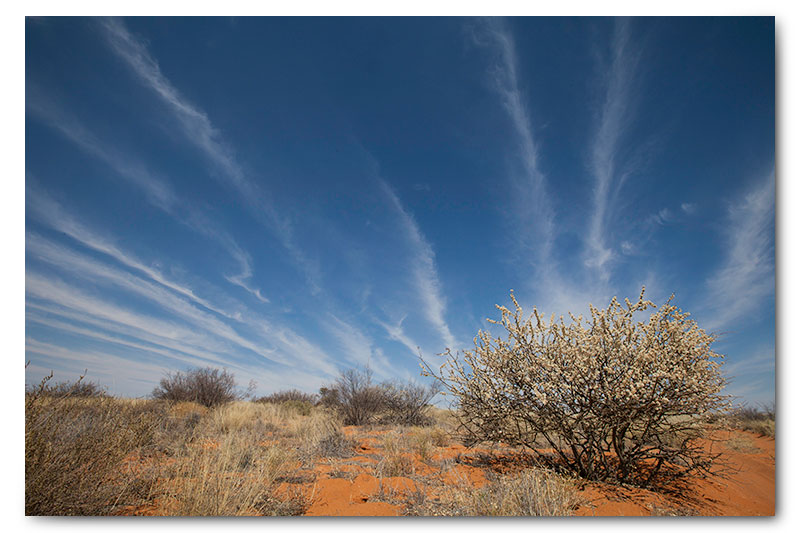
A typical waterhole scene. Clearly the waterholes were not designed by a photographer. They are built from rocks and concrete thus looking very “man made”, and stick up well above the ground, helping to create some great photos of legless, and while drinking, headless wildlife. Raptor photos are often either heads or tails and nothing in between.

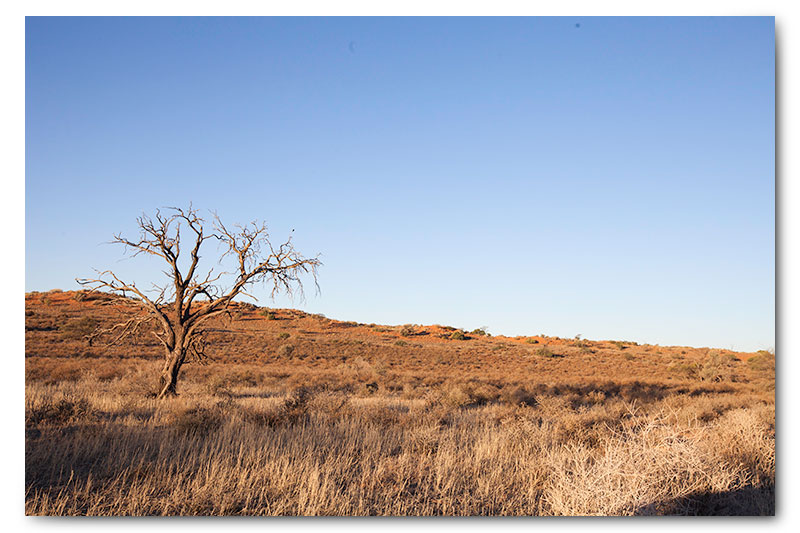
The roads of the Kalahari are BAD. I had read that the corrugated roads were bad, but not that they would break pretty much any car other than a cruiser. In SANParks’ defense, there is not much that can be done about it. On one morning we were the first car to head out of camp on a stretch of road which had received the old-tyre-dragged-behind-a-trackter treatment which was great, but on the return trip three hours later, the road was right back to normal. The photo below shows some of the more tame conditions. I see it also shows that my sensor needs a good cleaning :| Both the image above and the image bellow were taken by my lovely wife, Tam.

Sunrise and the dust made for some spectacular scenes. On this particular morning the wildebeest were having a right romp, kicking up loads of dust for some great photos.
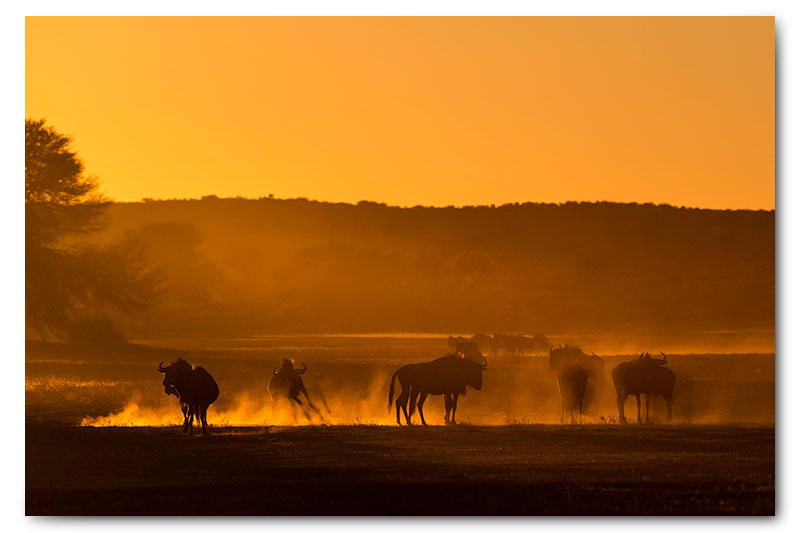
Just before our trip I happened to read a good article on starscape photography, not something I have ever really considered doing. Sitting at the fire on the first night and gazing up at the stars through absolutely clear skies, I decided to break out the wide angle and try my luck. Since I don’t own a cable release (well I didn’t then, but I bought one the day after we got back) the max exposure time I could use was 30 sec, so the ISO had to be pushed to 4000 to get a good image, but I was still very stoked with the way these turned out. I cant wait to try the cable release and some longer exposure times the next time I am in a truly dark place.
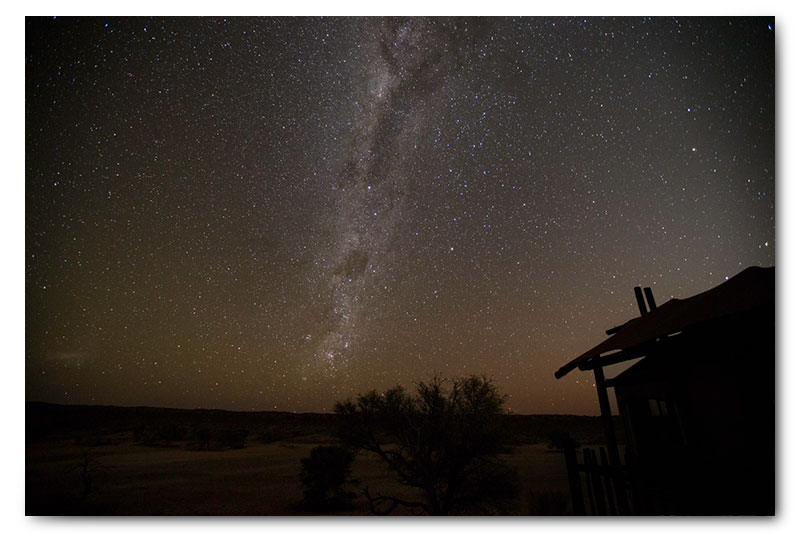
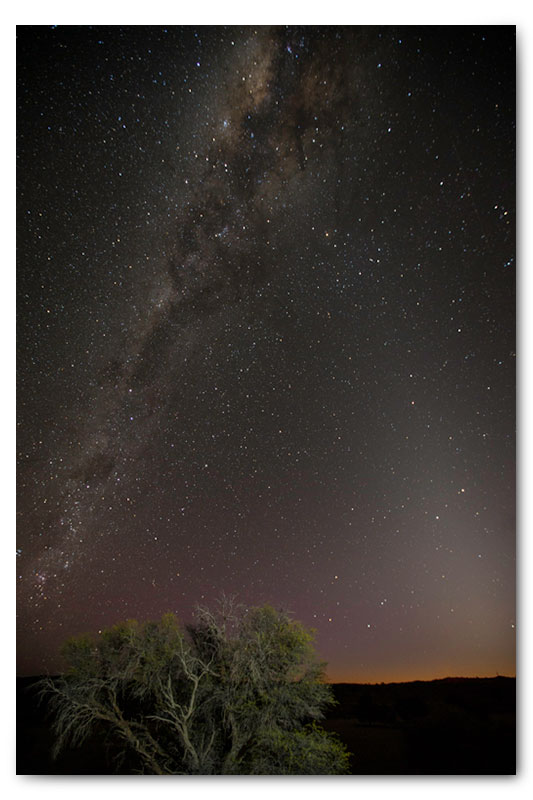
Hopefully that gives you a feel for what the KTP looks like and how it differs from Kruger or other SANParks. Now for Part 2 and the Kalahari wildlife.

Jess Dawson
Love the first two landscapes… so cool, colour contrast is awesome and clouds are very pretty. Stars look great too.
Much love
Kate
Love the starscapes Pete…don’t think I’ve seen such stars since we were in Mozambique and you captured them beautifully
Belle
The most stunning photos – well done Pete